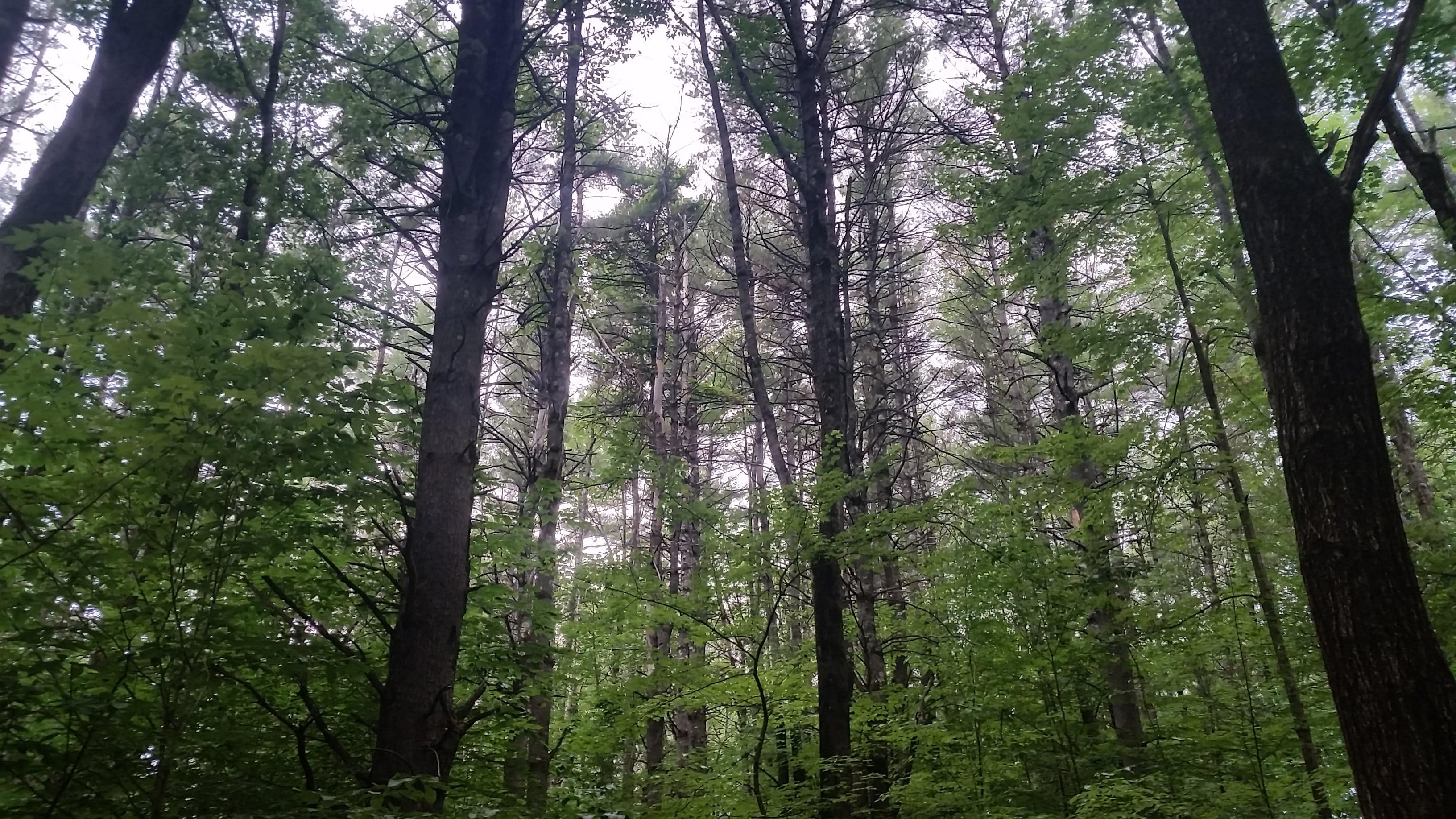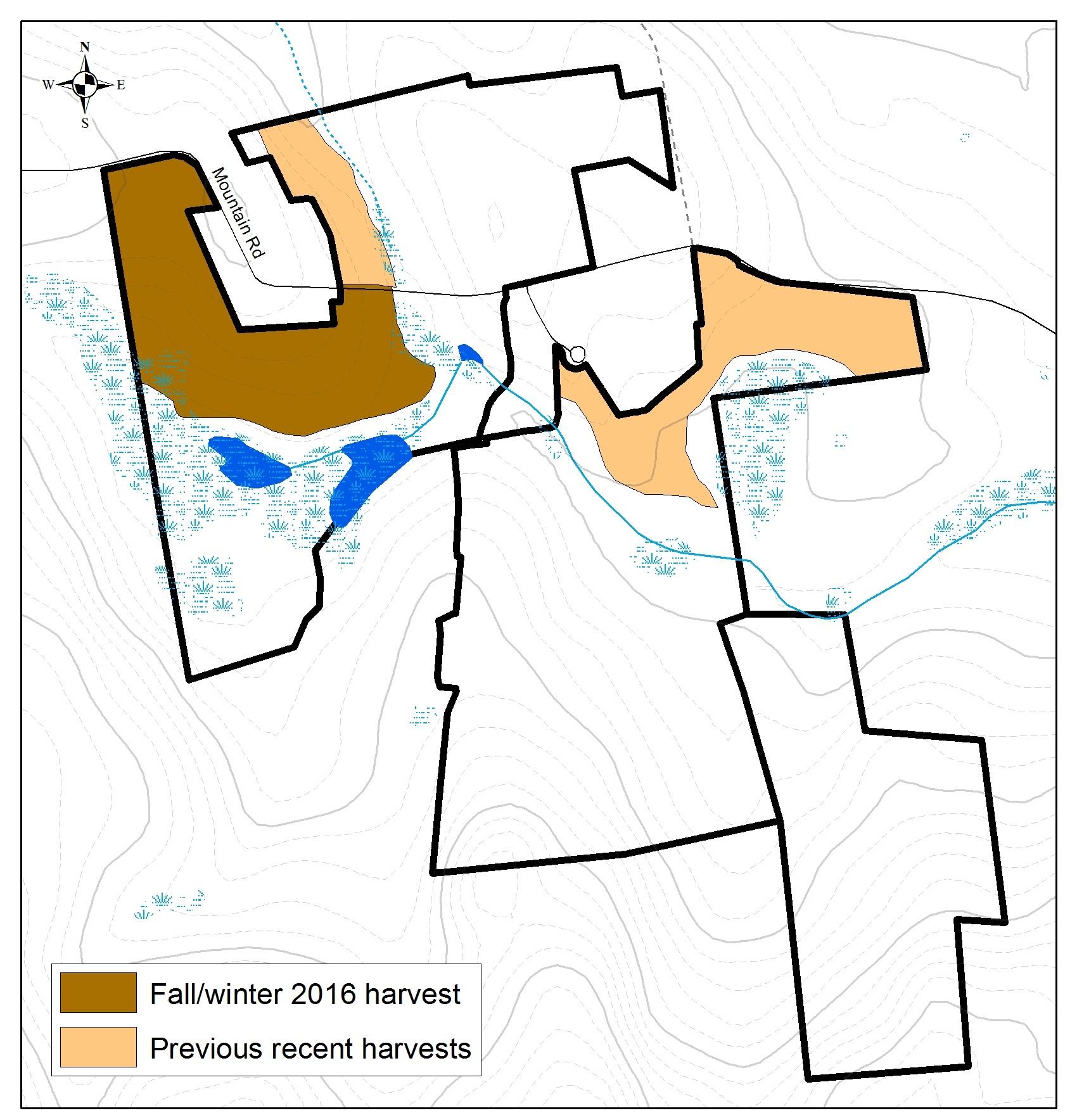Shelterwood operation removes poor quality pine trees

A white pine stand, pre-harvest, on the Whittemore Reservation in Lyndeborough, N.H.
To reinvigorate the white-pine dominant forest at the Forest Society's Whittemore Reservation in Lyndeborough, the Forest Society started a timber harvest in November. Licensed forester Eric Radloff of Bay State Forestry is administering the harvest, and loggers from HHP, a forest products company in Henniker, N.H., are cutting the wood. This 32-acre harvest, off Mountain Road, will remove poor quality and mature trees and create conditions suitable for natural regeneration. Two other small harvests treating 17 acres total were also recently completed on the 118-acre property, which is managed along with an additional 168 acres of Forest Society land to the south.
The timber inventory and management plan completed in 2012 noted densely spaced white pines with small crowns in the area now being harvested. Many of these trees were of poor health, making them vulnerable to disease and windthrow. This harvest type, called a shelterwood, will remove approximately half of the trees in the treatment area, focusing on those of poor quality. The trees that will not be cut are marked with yellow paint, allowing the forester to visualize the forest that will remain and better create the desired structure. This structure is critical in establishing a proper environment for the natural regeneration that will occur. The arrangement of the remaining trees affects the sunlight that reaches the forest floor -- a key factor in determining which tree species will be successful and ultimately make up the next forest. Based on the soils present, it is likely that hardwood species such as red maple, red oak, white ash, and sugar maple will grow following the cut.
White pine is also expected to be a part of the next stand of trees that grows, but it is unlikely to be the dominant presence it is today. This is because the existing white pine likely became established following the abandonment of old fields in the early 1900s. Extensive agricultural use of the property is evident by the abundant stone walls along the property boundaries and the interior. White pine has small, wind-blown seeds that can quickly colonize open fields, and its seedlings are less desirable than hardwoods as a food source for wildlife. Therefore, when a field is abandoned, white pine is well adapted to come in and take over assuming seed source is locally available. On this site, however, the soils are relatively moist and nutrient rich, and better suited to the growth of hardwood species. Following this current timber harvest, white pine will not have the advantages it once had when it colonized an open field, and therefore hardwood species are more likely to regenerate.
The Forest Society conducts timber harvests on our properties because we strongly believe that demonstrating responsible, sustainable land management is important and a core part of our mission as an organization. We typically conduct eight to 12 timber harvests annually after a detailed data-gathering and planning process. Please contact us with any questions about timber harvesting on our lands; we take pride in our land management and are always happy to discuss sustainable forestry.

Gabe Roxby is a field forester with the Forest Society.
